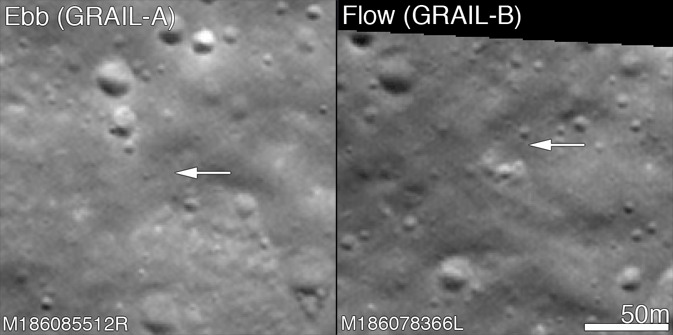NASA Lunar Reconnaissance Orbiter Spies GRAIL Crash Location
There are huge number of satellites and other spacecraft in orbit around the Earth and around other celestial bodies in our solar system. The point of all the spacecraft is to gather information to allow scientists and researchers to learn more about our world and the universe around us. Last year NASA crashed the twin GRAIL spacecraft into the side of a mountain on the moon.
Crashing these two spacecraft wasn't an accident, NASA did it on purpose on December 17, 2012. The crash site was on a lunar mountain near the moon's North Pole. The goal of crashing the two spacecraft into the moon was to kick up a plume of debris to help determine more about the composition of the Earth's natural satellite.

NASA used its Lunar Reconnaissance Orbiter to take photographs during and after the impact. The LRO was in a low orbit only about 100 miles from the lunar surface when the GRAIL spacecraft, Ebb and Flow made their fiery collision with the moon. The site of the impact was in shadow at the time of the collision so the LRO team had to wait until the plume of material rose high enough into the sunlight to make their observations.
The LAMP ultraviolet imaging spectrograph aboard the spacecraft was able to detect mercury and enhancements of atomic hydrogen in the plume of material. Scientists were surprised to find mercury in the impact plume because mercury is volatile and easily vaporized. Scientists believe that mercury could accumulate in the very cold and permanently shadowed craters on the moon surface, but they didn't believe mercury could exist an area that received regular sunlight. The GRAIL spacecraft were prattling about 3771 mph when they hit the surface of the moon.
[via NASA]
